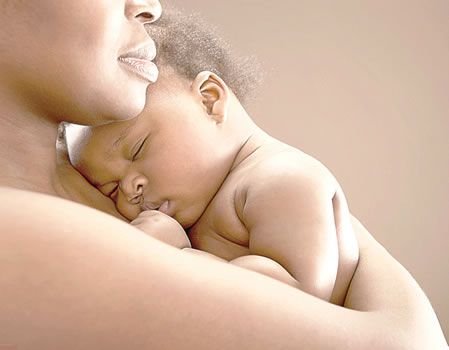Assisted reproduction has made several things which were hitherto considered impossible seemingly common place. One of these is conception after reaching menopause. However, this feat is impossible without the use of donor eggs.
Who are the appropriate candidates for donor egg?
The primary indication for egg donation was originally for women with Premature Ovarian Failure (POF). POF is a situation whereby a woman’s menstrual flow ceases before the age of 40. The causes of POF vary but a thorough medical evaluation is always required to seek the cause.
In recent years, the predominant indication for egg donation at most IVF centres has been for women with reduced egg quality. It has long been known that women over 40 years of age have reduced fertility in general and poorer chances of IVF success. This gradual, age-related decline in fertility is a direct effect of the age on a woman’s eggs. Other potential candidates for egg donation include: women who have previously had multiple failed IVF attempts, particularly when poor egg quality is suspected and women carrying transmittable genetic abnormalities which could affect their offspring. However, this latter indication has declined with the development and use of Pre-implantation Genetic diagnosis (PGD).
Testing of the recipient
Women considering using egg donation should undergo a medical evaluation including a complete history and physical examination, to assure that their health would not be significantly jeopardized by pregnancy. It is also important to seek and correct any abnormalities, which could otherwise compromise the success of IVF with donor eggs (i.e. factors which could affect fertilization, implantation or pregnancy). Such testing should generally include but is not necessarily limited to cervical cultures for bacteria (e.g Chlamydia), saline sonogram or hysteroscopy to assess the normality of the uterine cavity and a semen analysis to rule out a coexisting male factor.
Pretreatment counseling prior to egg donation should include not only a detailed discussion of the procedural aspects, risks and expected likelihood of success associated with the treatment but should also include an exploration of the psychological and social aspects of ‘third party’ reproduction.
Testing of the donor
A thorough evaluation or screening of each potential egg donor is of critical importance, whether the donor is known to the recipient (e.g sister) or is anonymous. This screening should serve to protect all parties involved (the donor, the recipient and the resulting offspring). The donor should generally be younger than 35 years old with laboratory evidence of normal ovarian reserve and no indication of impaired infertility. She must undergo testing for communicable infections e.g hepatitis, HIV, syphilis and genetic screening both via a detailed family history and specific blood tests which are determined by her ethnic/racial background ( e.g. for cystic fibrosis, Tay Sachs disease, sickle cell disease, thalassemia). A formal psychological evaluation is also performed.
Risks to the recipient
As the recipient does not undergo ovarian stimulation or egg retrieval, she is not exposed to the potential risks of these procedures (e.g ovarian hyperstimulation syndrome). The principal risk for the recipient is multiple pregnancies because egg donors are young (usually less than 35 years old) and pregnancy rates are high because of this. The age of the recipient even if over 40, does not affect pregnancy rates. It is important that the number of embryos transferred be limited, generally to no more than two or three embryos for a day and two to three transfer of one or two embryos if transferred on day five at the blastocyte stage.
Other theoretical risks to the recipient include transmission of infectious diseases such as HIV, it is unknown whether eggs can transmit the AIDs virus and to date, no cases of HIV transmission through egg donation have been reported. Nevertheless, meticulous screening of potential egg donors is critical.
Risks to the donor
Since the donor is the one that will take drugs to stimulate her ovaries, she is at risk of excessive response to the medications. This can however be prevented if detected early enough. She will also undergo a minor procedure for the egg collection process. She will be given drugs for sedation prior to this and in expert’s hands, this should not last more than 10 to 15 minutes. It has been argued for years that egg donation will reduce the supply of eggs the donor has but this is not so. With every menstrual cycle, about 20-30 eggs are recruited for development and of these, only one matures and is released in ovulation. The other 19-29 eggs die along the way. However, the drugs given to the donor to stimulate egg production will prevent the death of the rest so they could mature and become ready for collection.
Concerns about egg donation
The biggest concern of women looking to explore egg donation for conception is embedded in this question, “will the baby conceived have my genes?” This is a very valid concern and till very recently, fertility experts thought there was no genetic contribution from the mother (carrier/recipient) to the baby. However, most recent research evidence actually shows that there is a contribution of genes from the egg donor and also from the mother (recipient) to form the totality of the genes of the baby conceived.
Another concern is that if the baby will resemble the mother (carrier/recipient)? Fertility centers try to match the physical characteristics of the recipient with that of the donor. Such that for a tall mother, experts would get a tall donor or for a light skinned mother, experts would get a light skinned donor and so on.
A big concern is that of the child’s character. Mothers are always concerned if the child will behave like the egg donor or like the mother (recipient). For this I will give an analogy. If a priest has a son and the son grows up in the home of an irresponsible couple, the boy will most likely turn out to be irresponsible. If an irresponsible individual has a son that grows up in the house of a priest, he will most likely become a priest. This is because the social environment in which a child is brought up, contributes greatly to how the child turns out eventually.
WATCH TOP VIDEOS FROM NIGERIAN TRIBUNE TV
- Let’s Talk About SELF-AWARENESS
- Is Your Confidence Mistaken for Pride? Let’s talk about it
- Is Etiquette About Perfection…Or Just Not Being Rude?
- Top Psychologist Reveal 3 Signs You’re Struggling With Imposter Syndrome
- Do You Pick Up Work-Related Calls at Midnight or Never? Let’s Talk About Boundaries






